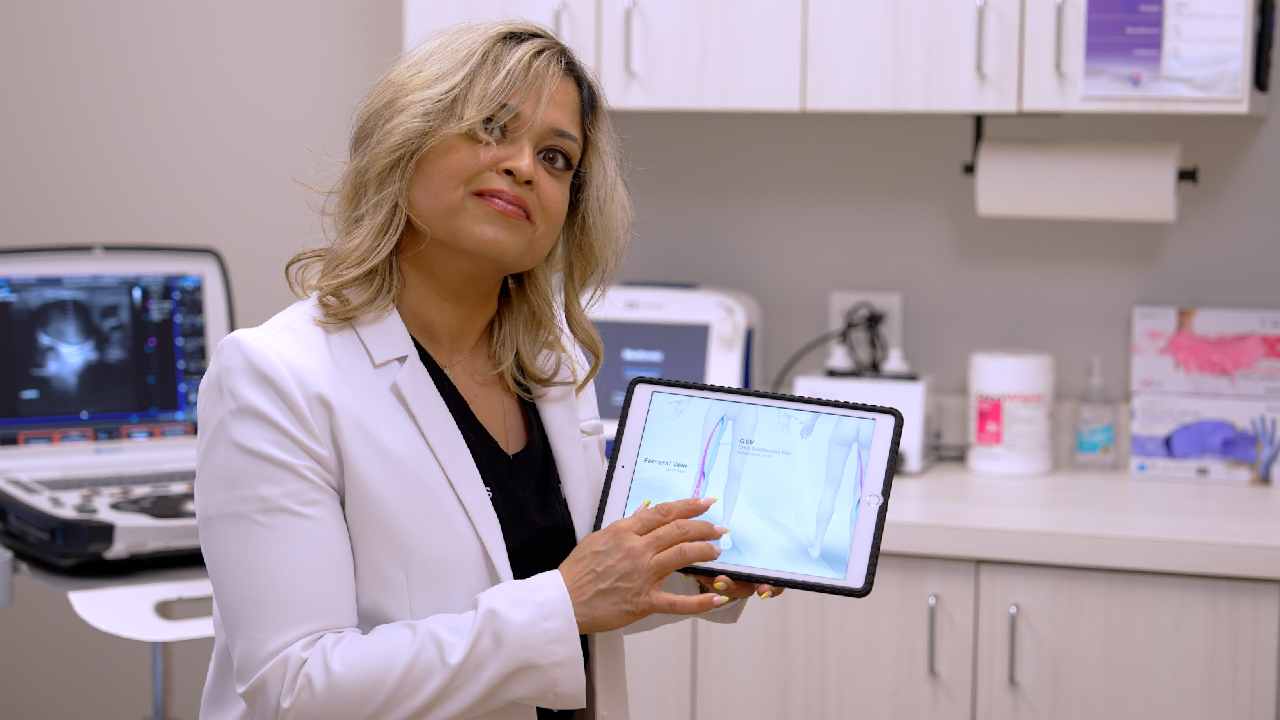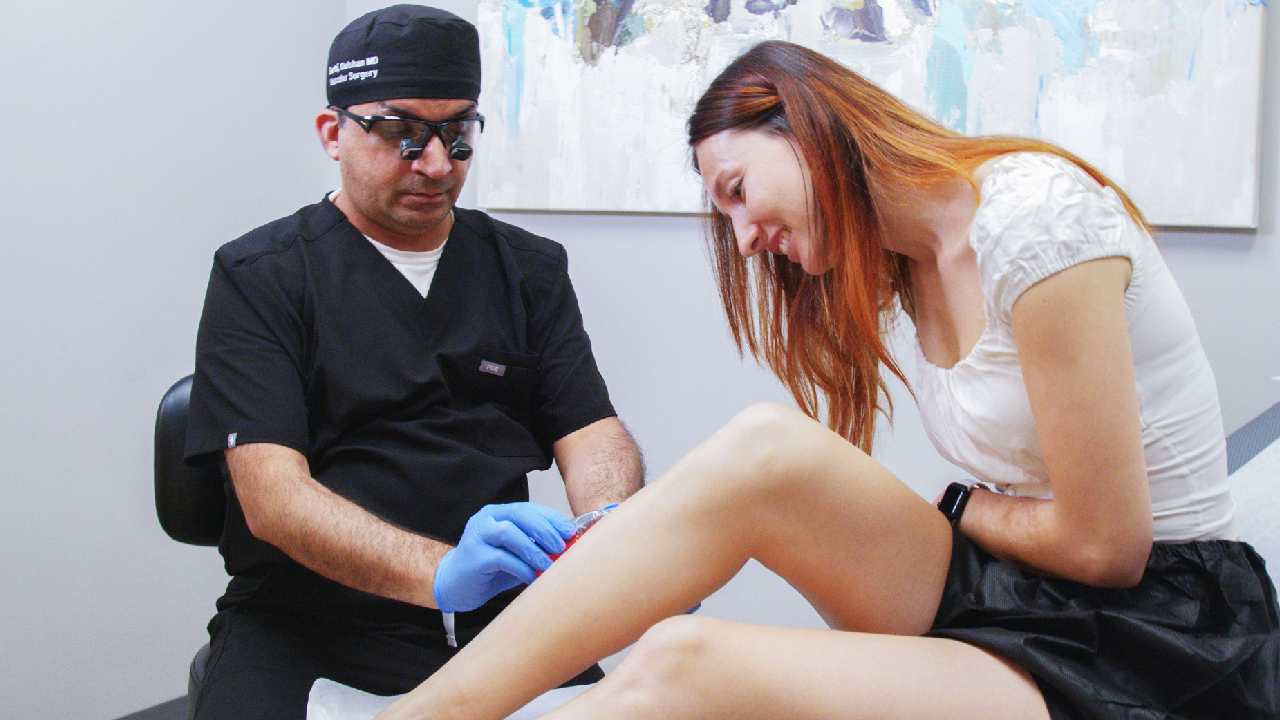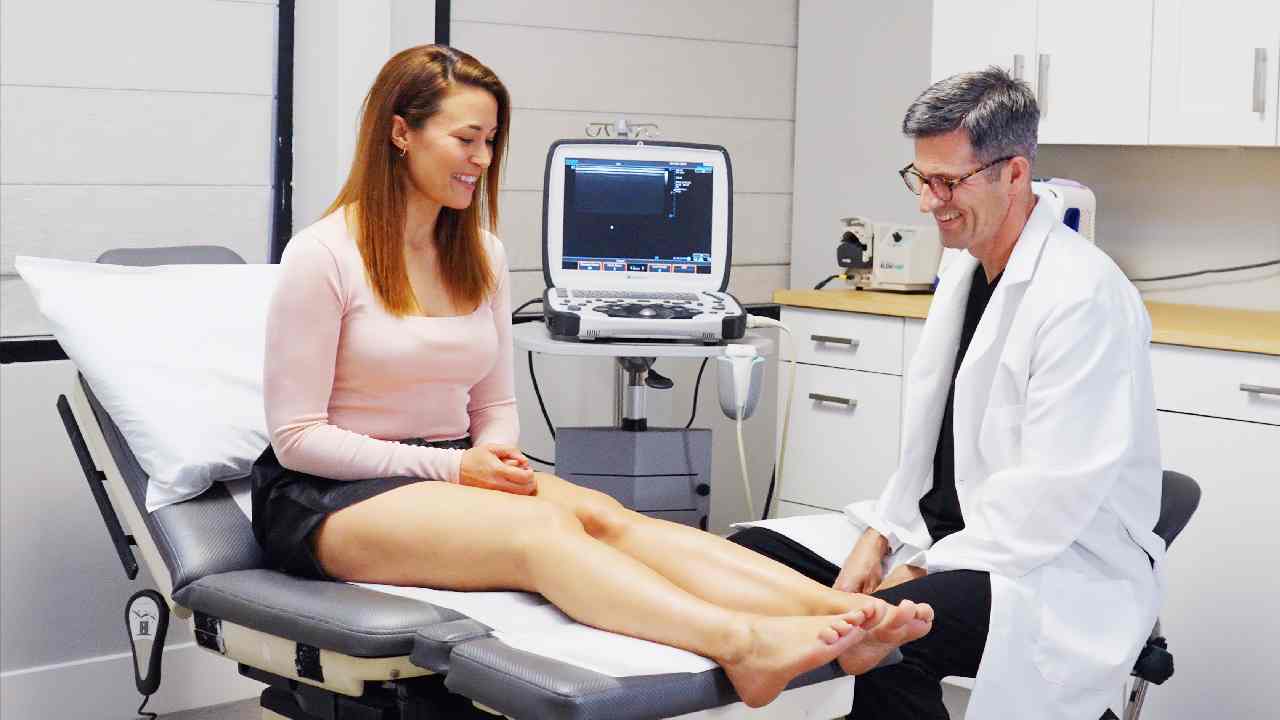
How to Remove Spider Veins Without Surgery
You may have spider veins if you’ve noticed small, discolored veins appearing on your legs or face. Spider veins, which resemble fine web-like patterns of red, blue, or purple veins, affect many people, especially as they age. They are often most noticeable on the thighs, calves, and ankles but can also appear on the face. While spider veins aren’t typically painful, they can cause discomfort and self-consciousness. These veins are caused by weakened valves in the blood vessels, which leads to blood pooling and the formation of visible veins.
At Vein Treatment Clinic, we specialize in non-surgical spider vein treatments that can help you regain smooth, clear skin without the need for invasive surgery. Whether dealing with spider veins on your legs or face, we offer minimally invasive spider vein treatments that can provide long-lasting results. In this article, we’ll explore the drawbacks of varicose vein surgery, the best treatments to remove spider veins, and tips to manage them at home.
Are you interested in getting more information about your condition or getting a treatment?
Fill the form below to start!
The Drawbacks of Spider Vein or Varicose Vein Surgery:
Long gone are the days when spider veins or varicose veins had to be treated through surgery. Varicose veins surgery options, such as vein ligation and vein stripping, involved considerable downtime and risks. But thanks to modern, minimally invasive spider vein treatments, varicose vein surgery is obsolete. These are some of the primary drawbacks of varicose vein surgery:
- Requires significant recovery time and rest
- Involves the risk of complications such as infections or scarring
- Can lead to pain, bruising, or swelling
- May require general anesthesia, adding to the risk
- Often results in long, visible scars
- Expensive and may not be covered by insurance
- Has a higher likelihood of recurrence of veins
- Involves a longer procedure time compared to non-invasive treatments
How to Remove Spider Veins Without Surgery
Spider veins don’t need to be treated through surgery. The best option for non-surgical treatment is sclerotherapy, a highly effective method used to treat spider veins. Sclerotherapy involves injecting a special solution into the affected veins, causing them to collapse and fade over time. This process is simple, minimally invasive, and typically requires little to no downtime. You can expect results to gradually improve as the treated veins are reabsorbed by your body.
Sclerotherapy targets the vein walls with a liquid solution known as a sclerosant. The sclerosant irritates the walls of the vein, causing them to stick together. Over time, the collapsed vein is reabsorbed by the body, and blood is redirected to healthier veins. This process is very effective for small to medium-sized spider veins, especially in the legs or face. The treatment typically takes about 30 minutes, and most patients can resume regular activities almost immediately.
Spider veins can sometimes indicate an underlying condition known as venous insufficiency, which occurs when the valves in your veins aren’t working properly, leading to blood pooling in the legs. If this is the case, treating the root cause of the problem is crucial. At Vein Treatment Clinic, we offer several treatments for venous insufficiency, such as endovenous laser ablation (EVLA), radiofrequency ablation (RFA), and VenaSeal. These vein treatments can help restore proper blood flow and prevent the recurrence of spider veins.
How to Manage Spider Veins at Home
While there’s no definitive way to remove spider veins entirely at home, there are several lifestyle changes and home remedies that can help manage the condition and prevent it from worsening. These tips can help reduce discomfort, minimize the risk of new spider veins forming, and keep your veins healthy overall.
1. Exercise Regularly
Regular physical activity helps improve circulation and prevent the formation of new spider veins. Walking, swimming, and cycling can strengthen your leg muscles and improve blood flow, reducing the pressure on your veins. Aim for at least 30 minutes of moderate exercise each day. Exercise can also help with weight management, which reduces pressure on the veins and helps prevent venous problems.
2. Elevate Your Legs
If you’ve been standing or sitting for extended periods, take breaks to elevate your legs. This helps promote healthy blood flow and reduces the pressure in the veins. Try elevating your legs above the level of your heart for 15 to 20 minutes at a time. This is particularly helpful for those who are on their feet all day at work or have jobs that involve long periods of sitting.
3. Wear Compression Stockings
Compression stockings can be highly effective in reducing the appearance and symptoms of spider veins. These stockings apply gentle pressure to your legs, helping improve circulation and prevent blood from pooling in the veins. They are especially useful for individuals who suffer from venous insufficiency or spend long hours on their feet.
4. Maintain a Healthy Diet
A diet rich in fiber and low in salt can help prevent conditions contributing to spider veins. Fiber aids digestion and prevents constipation, which can increase pressure in your veins. Reducing salt intake can help prevent water retention, which also puts additional pressure on your veins. Include foods like leafy greens, fruits, and whole grains in your diet to support vein health.
5. Avoid Prolonged Standing or Sitting
Prolonged periods of standing or sitting can lead to poor circulation and increase the risk of developing spider veins. Try to move around every 30 minutes, especially if your job requires you to stay in one position for long periods. If you need to stand, shift your weight from one leg to the other or take small steps to promote circulation. If you’re sitting for a while, take breaks to stretch, stand up, and perhaps walk around for a few minutes.
6. Stay Hydrated
Drinking plenty of water is essential for healthy circulation. Staying hydrated helps thin your blood and supports the function of your blood vessels. Dehydration can cause your blood to become thicker and less capable of flowing smoothly, putting more strain on your veins. Ensure you drink at least 8 glasses of water each day, especially when you’re physically active.
7. Visit a Vein Doctor
If you’re experiencing spider veins, it’s important to consult with a vein doctor. A professional can evaluate your condition, identify any underlying issues, and recommend the best spider vein treatments. A vein doctor can also help you understand if your spider veins are caused by venous insufficiency or if additional vein treatments are necessary. Contact us to schedule a consultation with one of our Ivy League-educated, board-certified vein doctors.
Insurance Coverage for Spider Vein Treatments
Most vein treatments, including sclerotherapy, are covered by medical insurance when deemed medically necessary. While spider veins are often viewed as a cosmetic concern, the underlying venous insufficiency that causes them is a medical condition. If you are diagnosed with venous insufficiency, treatments like sclerotherapy may also be covered by your insurance plan. Contact us to verify your insurance details and find out if your vein treatment is covered.
Vein Treatment Clinic works with over 100 insurance providers to ensure your treatment is as affordable as possible. We have a variety of locations across New York, Long Island, California, Maryland, and New Jersey, making it easy to access our state-of-the-art facilities. Visit your nearest vein treatment clinic to learn more about your options and how we can help.
FEATURED POSTS BY VEIN DOCTORS














